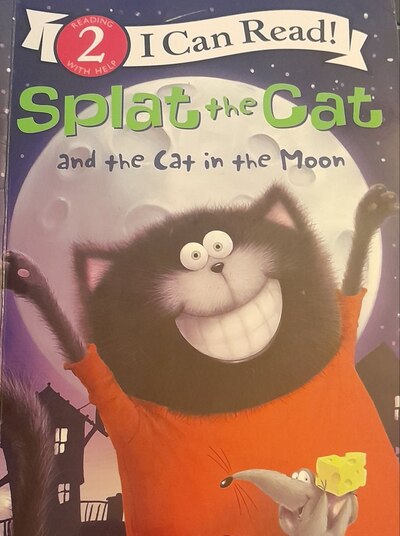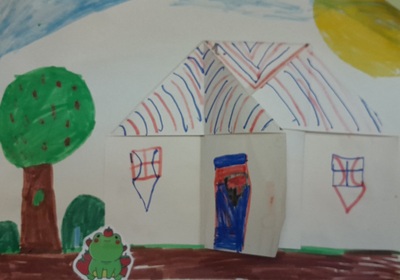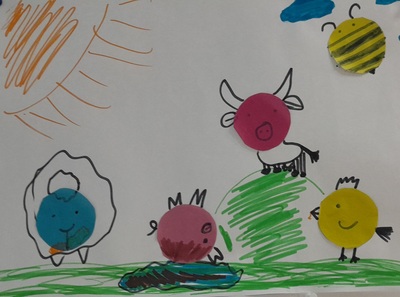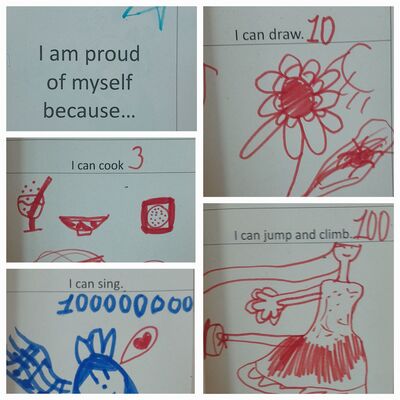
The story
This time we used the story by Rob Scotton published by Harper Collings Publishers in the series Reading With Help. It is one of the stories in the series my kids know already because it has been translated into Russian. I had a copy at home and I really wanted to use it as part of our going back to roots (aka to the procedures from year 1) when we were reading a book every week as part of developing my students’ literacy.
Underneath you can see how we used this particular story, however, these are not the only activities that this book lends itself to. This is how we needed it and how we used it.
The ideas
- Concepts: this was, probably, the main aim of this book in our lessons. We have done a series of lessons devoted to development of soft skills in our communication lessons. Splat and Plonk differ in their opinions on what the moon looks like and they sort out this disagreement in a slightly agressive way, teasing and pushing and almost hurting each other. This was a perfect story to bring to class at the end of the whole series.
- Another concept that I did not include or even forsee from the very beginning was the different ways that we see the world. Plonk looks at the moon to see the craters, as a great space fan, whereas Splat looks at the moon to see the cat’s face in she shades and spots on the moon surface. Neither is wrong, they only have a different outlook on the world. Plonk represents a realist (or, as we called him, the scientist) and Splat has a more creative way of perceiving the world (for us he was the artist).
- Functional language: this was the main aim of the lesson, linguistically, not focused on any specific function or a situation, only a few useful phrases such as ‘These are definitely craters’, ‘I’ll show you’, ‘Are you ok?
- Grammar: no obvious structure for us to focus on, since nothing stands out, however, we used it as an additional practice of the past tense. Some of the verbs my students already know (saw, didn’t see, looked) and some were completely new (nudged, hit, aimed).
- Vocabulary: no obvious set of vocabulary items but we had to introdudce/ check such as: a notepad, telescope, craters etc,
The lesson
Here is the overview of the main stages of the lesson
- the cover page
- the vocabulary, I have chosen these words and phrases to introduce and to check, we read them and looked for more examples of use
- ‘your phrase’: I have prepared a few phrases aka quotes from the story on separate cards to give out to students (one per each) to help them focus on listening. We read them out loud and the students were supposed to listen and to raise a hand when they heard their line in the story
- comprehension task: Did Plank and Splat communicated effectively? Who was right? Who was wrong?
- reading: I read the story from my copy while changing the visuals on the powerpoint. I created these using A.I. to match the key moments in the story and to boost comprehension
- discussing the comprehension questions above.
- personalisation: How do you look at the moon, as an artist or as a scientist?
- notes: kids read and complete sentences about the story
- the following lesson: a few chosen words from the story written on the board, the students retell the story (or elements of it)
- there are few videos of the read aloud on youtube so these can be used in class, too. I am going to use one of them to share with my kids and I hope that, perhaps, they will read it and watch it again at home.
Reflection and more ideas
I absolutely loved the story. We listened and read, we had a little laugh at the end we had a reall nice discussion about communication and the ways of looking at the world. It even went further because one of my students suggested that the moon can also be a pancake and we agreed that this is how a chef would look at it. I also liked all of the ideas they expressed in their notes and they were definitely not anonimous. Most children liked Splat (but not everyone), most appreciated Plank’s realism (but not everyone, ‘Miss Anka, he is a bore!’) and most children liked Seymour’s trick (but not everyone, ‘Miss Anka, he cheated’).
Absolutely everyone loved the last task in which they had to come up with an idea what to put in front of the telescope lens to play a trick on both cats and this is the only sentence that we read out loud, just to compare ideas.
This lesson and this story is actually going to transform into a lot more because first of all, I got hooded on the visuals created by the A.I. and I want to included it in our Art Explorers and I love the idea of the world seen by different people, the scientists and the artists and this is where we are going to go next week.
Happy teaching!



